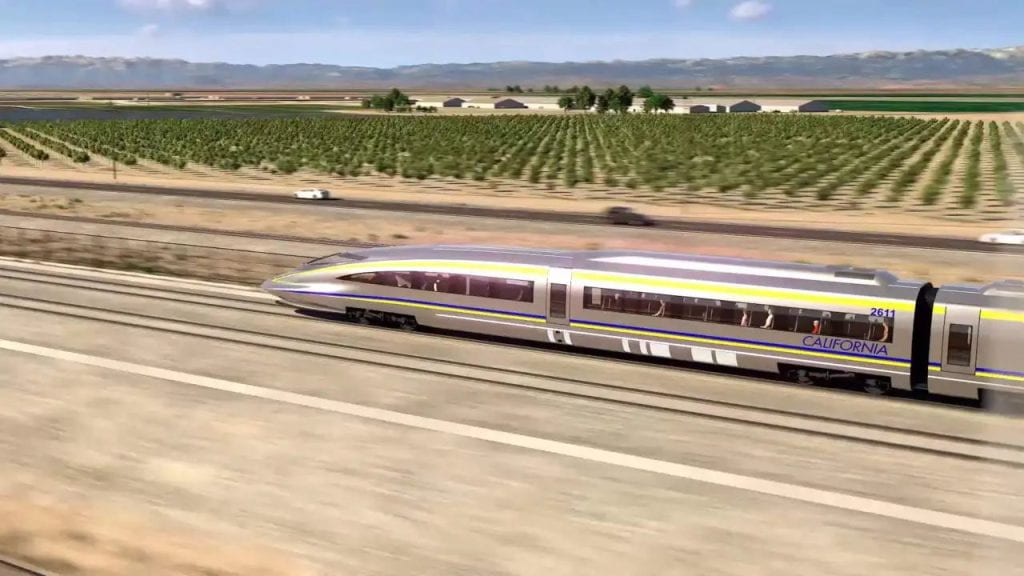The California High-Speed Rail Project: Transforming Transportation

California High-Speed Rail
The California High-Speed Rail (CAHSR) project represents a transformative vision for modernizing transportation infrastructure in the Golden State. This ambitious initiative aims to connect major urban centers, including San Francisco, Los Angeles, Sacramento, and San Diego, via a high-speed rail system capable of speeds exceeding 200 miles per hour. The project’s scope extends beyond efficient travel; it’s envisioned as a catalyst for economic development, environmental sustainability, and job creation. By reducing travel times between these mega-regions to under three hours, the project not only promises enhanced connectivity but also significant benefits for local economies and the environment. This blog post will explore the potential impacts and challenges associated with the implementation of CAHSR, shedding light on its transformative role in addressing the state’s 21st-century transportation needs while tackling pressing societal issues such as traffic congestion and air pollution.
California High-Speed Rail represents a bold vision for the future of transportation in the state, driven by a comprehensive set of objectives aimed at revolutionizing travel efficiency and sustainability. With its primary goal of establishing high-speed rail passenger service expeditiously, the project is not just about connecting cities but also about making strategic investments that yield immediate mobility, economic, and environmental benefits. By linking major regions like San Francisco and Los Angeles in under three hours, this visionary project will significantly reduce travel times and reliance on traditional modes of transportation. Moreover, as the project extends to Sacramento and San Diego, encompassing a total of 800 miles and up to 24 stations, the California High-Speed Rail Authority is setting the stage for a paradigm shift in statewide transportation infrastructure.
The project offers a plethora of benefits that extend beyond mere transportation efficiency, encompassing significant environmental, economic, and social advantages. From an environmental perspective, the adoption of high-speed rail will play a crucial role in curbing carbon emissions. By providing a viable alternative to air and road travel, the project has the potential to mitigate the impact of transportation-related pollutants, contributing to cleaner air and a healthier environment statewide.
Economically, the implementation of high-speed rail promises to inject vitality into local economies along its route. The project has already created over 13,000 well-paying labor jobs and generated a substantial economic output of $16 billion. Additionally, with more than 800 small businesses actively involved in the project, the ripple effect of this investment is poised to stimulate growth and prosperity in communities situated along the rail corridor.
On a social level, the benefits of high-speed rail are equally profound. By enhancing mobility and accessibility, the project fosters greater connectivity between urban centers, suburban areas, and rural regions. This improved access to transportation options not only facilitates daily commuting but also promotes broader social equity and inclusivity, ultimately enriching the quality of life for Californians across diverse demographics. Through these multifaceted benefits, high-speed rail emerges as a transformative solution that transcends conventional transportation paradigms, laying the groundwork for a more sustainable and interconnected future.
However, the journey has not been without hurdles, particularly concerning funding and financial considerations. The project’s budget has escalated significantly, now standing at approximately four times its initial estimate. This escalation reflects the complex financial realities of large-scale infrastructure projects, including land acquisition costs, labor expenses, and unexpected contingencies. Securing adequate funding remains an ongoing challenge, with the original vision of substantial private-sector investment not materializing as anticipated. Consequently, the project’s financing structure has faced scrutiny and adaptation over time to align with evolving fiscal landscapes and regulatory requirements.
In addition to financial complexities, CAHSR has encountered legal and political obstacles that have influenced its trajectory. Delays associated with land acquisition, environmental review processes, and legal disputes have contributed to project setbacks and extended timelines. These challenges highlight the intricate interplay between regulatory compliance, public engagement, and project execution in the context of a transformative infrastructure initiative. Despite these adversities, milestones such as securing federal grant funding and advancing key project sections underscore ongoing efforts to navigate the intricacies of project development and realize the long-term vision of a high-speed rail network that enhances connectivity, mobility, and sustainability across California.
Comparing CAHSR with successful international high-speed rail systems offers valuable insights and lessons for its implementation. Countries like Japan, Germany, China, Spain, and France have established extensive and efficient high-speed rail networks, showcasing various models of success and best practices.
Japan stands out as the pioneer of high-speed rail, with the Shinkansen (bullet train) inaugurated in 1964. Since then, Japan has expanded its network significantly, emphasizing reliability, safety, and speed in long-distance travel. Similarly, Germany entered the high-speed rail domain in 1991, operating the InterCityExpress (ICE) trains with top speeds of 300 km/h. Germany’s approach underscores technological advancement and operational efficiency.
China’s rapid development of high-speed rail since 2007 is particularly noteworthy, with the world’s largest network covering vast distances. The Beijing-Guangzhou line, spanning 2,298 km, exemplifies China’s commitment to expansive connectivity. Spain and France also showcase robust networks, emphasizing high speeds and frequent services.
Lessons from these successful systems include meticulous planning, robust financing models, strategic infrastructure development, and stakeholder engagement. Effective project management, technological innovation, and a long-term vision are essential ingredients for realizing a transformative high-speed rail network. Furthermore, the global enthusiasm for high-speed rail underscores its potential as a sustainable, efficient, and transformative mode of transportation, urging nations like the United States and others to prioritize and invest in this critical infrastructure for future mobility and connectivity.
California High-Speed Rail exemplifies a transformative vision for modernizing transportation infrastructure in the Golden State. Despite encountering challenges such as funding complexities, legal hurdles, and political dynamics, the project remains a beacon of innovation and progress. By drawing lessons from successful international high-speed rail systems in Japan, Germany, China, Spain, and France, CAHSR underscores the importance of meticulous planning, robust financing strategies, and effective stakeholder engagement in achieving transformative infrastructure goals. With its promise of enhanced connectivity, economic vitality, environmental sustainability, and social equity, CAHSR represents a strategic investment in California’s future, positioning high-speed rail as a cornerstone of sustainable and interconnected mobility for the 21st century.
References
https://transportation.house.gov/uploadedfiles/2023-11-29_mr._ohanian_-_testimony.pdf
https://science.howstuffworks.com/transport/engines-equipment/8-benefits-high-speed-trains.htm


